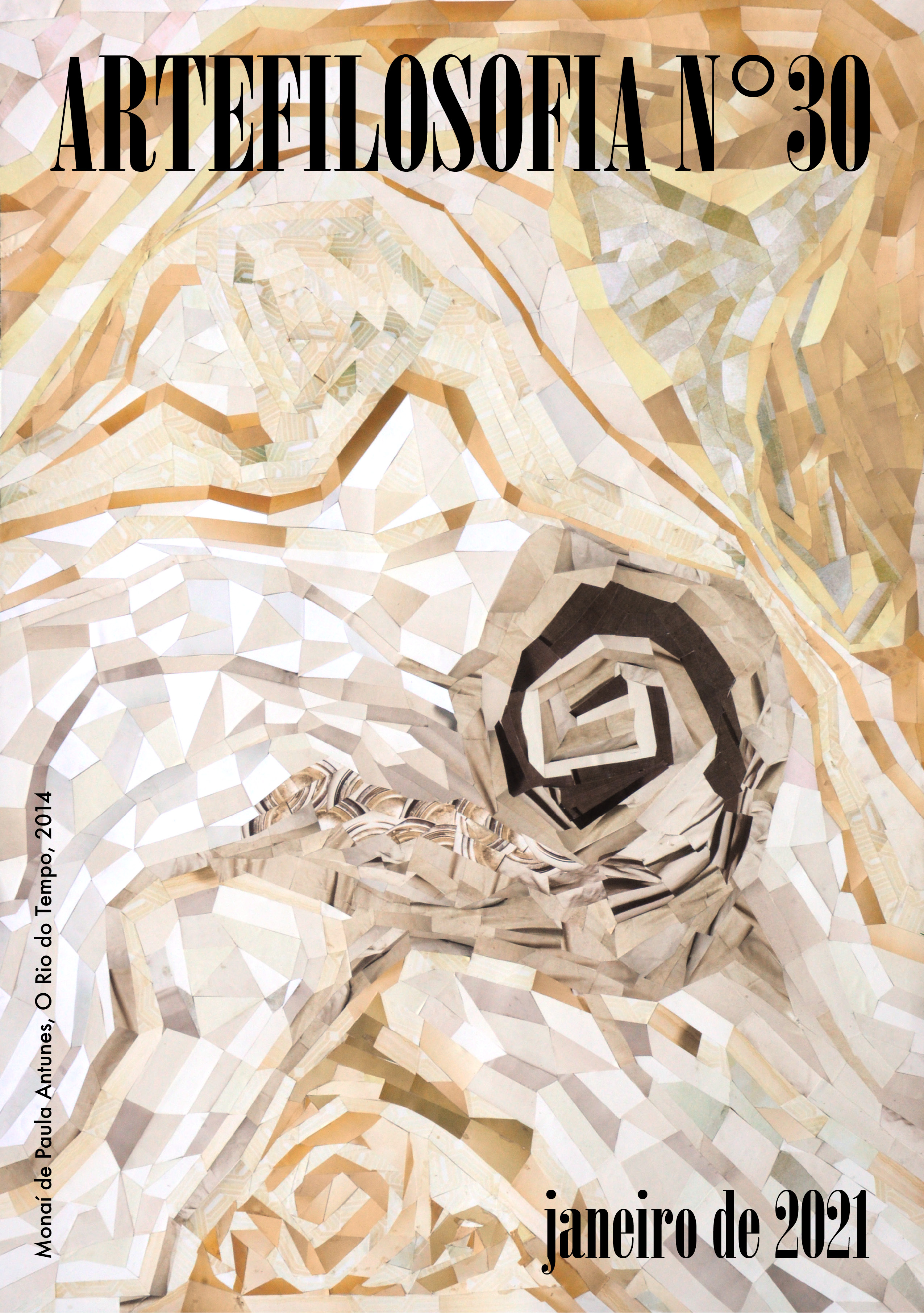Among princesses and prostitutes:
the allegories of the feminine in Modernity
Abstract
Abstract: This essay propose to investigate the feminine dimension in Walter Benjamin's thought from the allegorical expression of language that is not only shown aesthetically, but is defined as epistemological and ethical category. In this sense, first of all, we will go through the birth of philosophy in the Greeks and its constitution based on male thought to confront Benjamin's epistemological criticism, which announces the truth as beautiful. In the criticism of representation, we already see the question of linguistic identification that differentiates the symbol and the allegory and places them alongside what we call a male and female tradition of thought. After that, we should explore the allegorical use in the representation of queens in the dramas of the German Baroque, presenting, in the moral and political ambiguities of their time, the creature and melancholic dimension of women in the German Baroque and the characterization of history as nature. Finally, we explored in the social transformations caused bythe expansion of the mode of production and circulation of goods in Parisian modernity the transfigurations of allegory by the heroines of Baudelaire.
Downloads
References
AREDNT, Hannah. Homens em tempos sombrios. São Paulo, Cia das Letras, 1999.
BENJAMIN, Walter. Baudelaire e a Modernidade. Trad. BARRENTO, João. Belo Horizonte: Autêntica, 2015
BENJAMIN, Walter. Ensaios reunidos: escritos sobre Goethe. Trad. BORNEBUSCH, Monica. São Paulo: Editora 34, 2009.
BENJAMIN, Walter. Gesammelte Briefe. Org. GÖDDE, Chirstoph; LONITZ, Henri. Frankfurt, Suhrkamp,1995.
BENJAMIN, Walter. Gesammelte Schriften. Org. TIEDEMANN, Rolf; SCHWEPPENHÄUSERM, Hermann. Frankfurt, Suhrkamp, 1974.
BENJAMIN, Walter. Origem do drama trágico alemão. Trad. BARRENTO, João. Belo Horizonte: Autêntica, 2013.
BENJAMIN, Walter. Passagens. Trad. BOLLE, Willi. Belo Horizonte: UFMG, 2009.
BENJAMIN, Walter. Sobre o conceito de história. In. Walter Benjamin: aviso de incêndio. Trad. GAGNEBIN, Jeanne-Marie; MÜLLER, Marcos Lutz. São Paulo. Boitempo, 2005.
BENJAMIN, Walter. Sobre a linguagem geral e linguagem do homem. In. Escritos sobre mito e linguagem. Trad. KAMPFF LAGES, Susana. São Paulo: Editora 34, 2013.
BUCI-GLUCKSMANN, Christine. La raison baroque: de Baudelaire à Benjamin. Paris. Galilée, 1984.
BUCK-MORSS, Susan. Dialética do olhar: Walter Benjamin e o projeto das passagens. Belo Horizonte: UFMG, 2002.
CHAVES, Ernani. Eros criativo: cultura e educação erótica nos textos do estudante Walter Benjamin. In. Arte e Filosofia. Ouro Preto, n.4, jan.2008 p.p.45-53.
DESCARTES. René. Meditações Metafísicas. In. Os pensadores. São Paulo, Abril Cultural, 1973.
GAGNEBIN, Jeanne Marie. As flautistas, as parteiras e as guerreiras. In: Sete aulas sobre linguagem, memória e história. Rio de Janeiro: Imago, 1997.
NEWMAN, Jane Modernity, Nation and Baroque. Cornell University Press. New York, 2011.
NEWMAN, Jane Sons and Mothers: Agrippina, Semiramis, and the Philological Construction of Gender Roles in Early Modern Germany. In. Renaissance Quarterly, Vol. 49, No. 1. University of Chicago Press: Spring, 1996.
PINHO, Isabela. O feminino como Médium da linguagem: sobre algumas figuras femininas na obra de Walter Benjamin. Dissertação de Mestrado. Universidade Federal Fluminense. Rio de Janeiro, 2014.
WINCKELMANN. Johann Joachim. Reflexões sobre a imitação das obras gregas na pintura e na escultura. Porto Alegre: Movimento, 1975; p.53.
WITTE, Bernd. Walter Benjamin: uma biografia. Belo Horizonte: Autêntica, 2017.
WHITEHEAD, Alfred North. Process and Reality, The Free Press, New, York, 1978.
Copyright (c) 2021 Michel Amary

This work is licensed under a Creative Commons Attribution-NonCommercial-ShareAlike 4.0 International License.
Autores que publicam nesta revista concordam com os seguintes termos:
- Autores/as mantém os direitos autorais e concedem à revista o direito de primeira publicação, com o trabalho simultaneamente licenciado sob a creativecommons.org/licenses/by-nc-sa/4.0/ que permite o compartilhamento do trabalho, com reconhecimento da autoria e publicação inicial nesta revista.
- Autores/as têm autorização para assumir contratos adicionais separadamente, para distribuição não-exclusiva da versão do trabalho publicada nesta revista (ex.: publicar em repositório institucional ou como capítulo de livro), com reconhecimento de autoria e publicação inicial nesta revista.


